Week 1 – Intro to Course
Introduction
8 August
2D Foundation goal is to foster creativity through individual and collaborative learning experiences for interdisciplinary art, design and media projects.
About Ina http://inaconradi.com/
Previous Projects
Please find examples of past projects for better overview of the course.
Here you can find examples from previous years on projects, Visual Journals, and process
Tactile Color series, Art Installations in ADM
Project 1
My Line is Emo (project duration 4 weeks)
Abstract: Use concept of line to interpret eighteen emotions following the template given on the assignment sheet. Lines should vary to express the emotions from 6 basic emotion categories: anger, love, joy, fear, sadness and surprise. Each category to be represented by by 3 expressive lines. For Project Brief please see Projects.
Please see link to PDF Project 1 Emo_Brief_AY1617_26Jul2016lowres
Visual Journal
What is Visual Journal?
Process Workbook, Journal, Visual Diary- these terms are referring to assembled record showing development stages of one’s solution to a problem where observation, thinking, exploration, expression, and making are involved. Development stages from individual sketches to the final solution are thoughtfully documented, showing one imaginative and inventive response to a problem posed by an art and design project. In a nutshell, it is a documented progression of steps for one’s thought process leading to a final solution. The documentation will be digital (movies, photos of the process uploaded on OSS) or analog (hand drawn journal). You can have one workbook for each project, or one main workbook for all projects. Workbook should not be expensive binder or expensive note pad -rather can be compiled out of loose sheets of sketches, drawings that are stapled together, tracing paper pad, even A6 size notepad; it can include photos of the process.
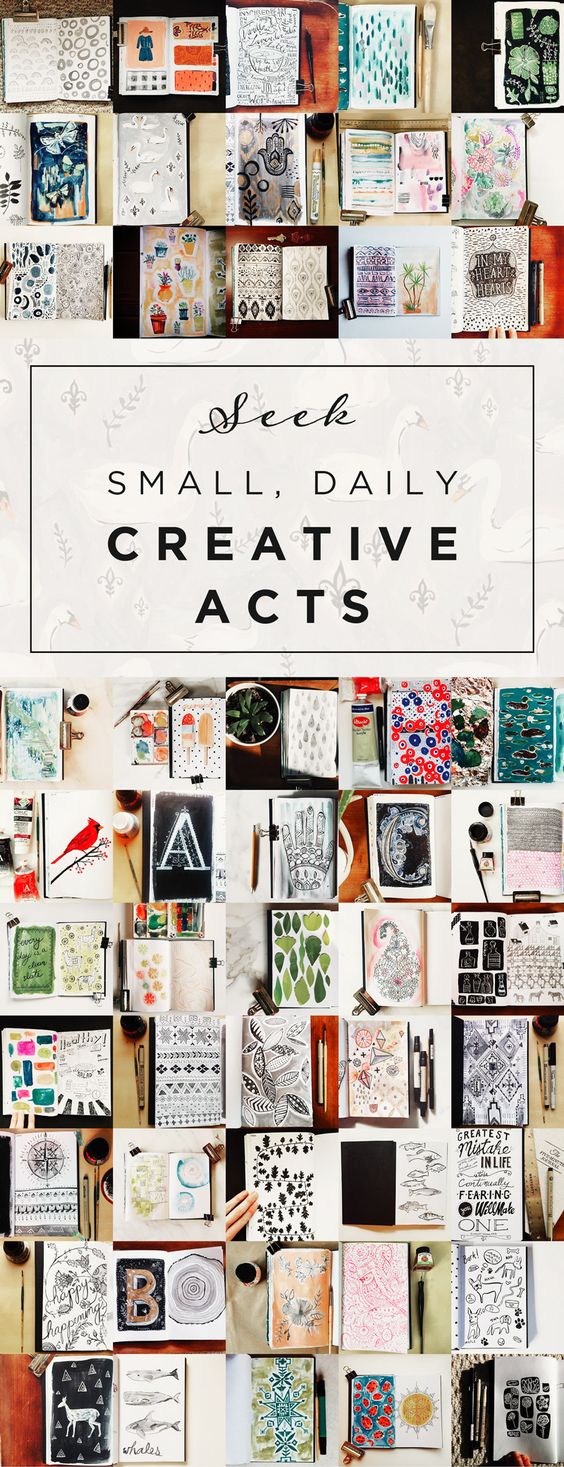
On Visual Journal and Research:
During the next 4 weeks all of your of process will be documented in the Visual Journal. Process includes your drawings, your sketches, your research on artists and techniques. Here are some of the examples of Visual journals for project 1 that will be due end of the project for review.
Journal Exploration and development for Project 1 by Student Melissa Low:
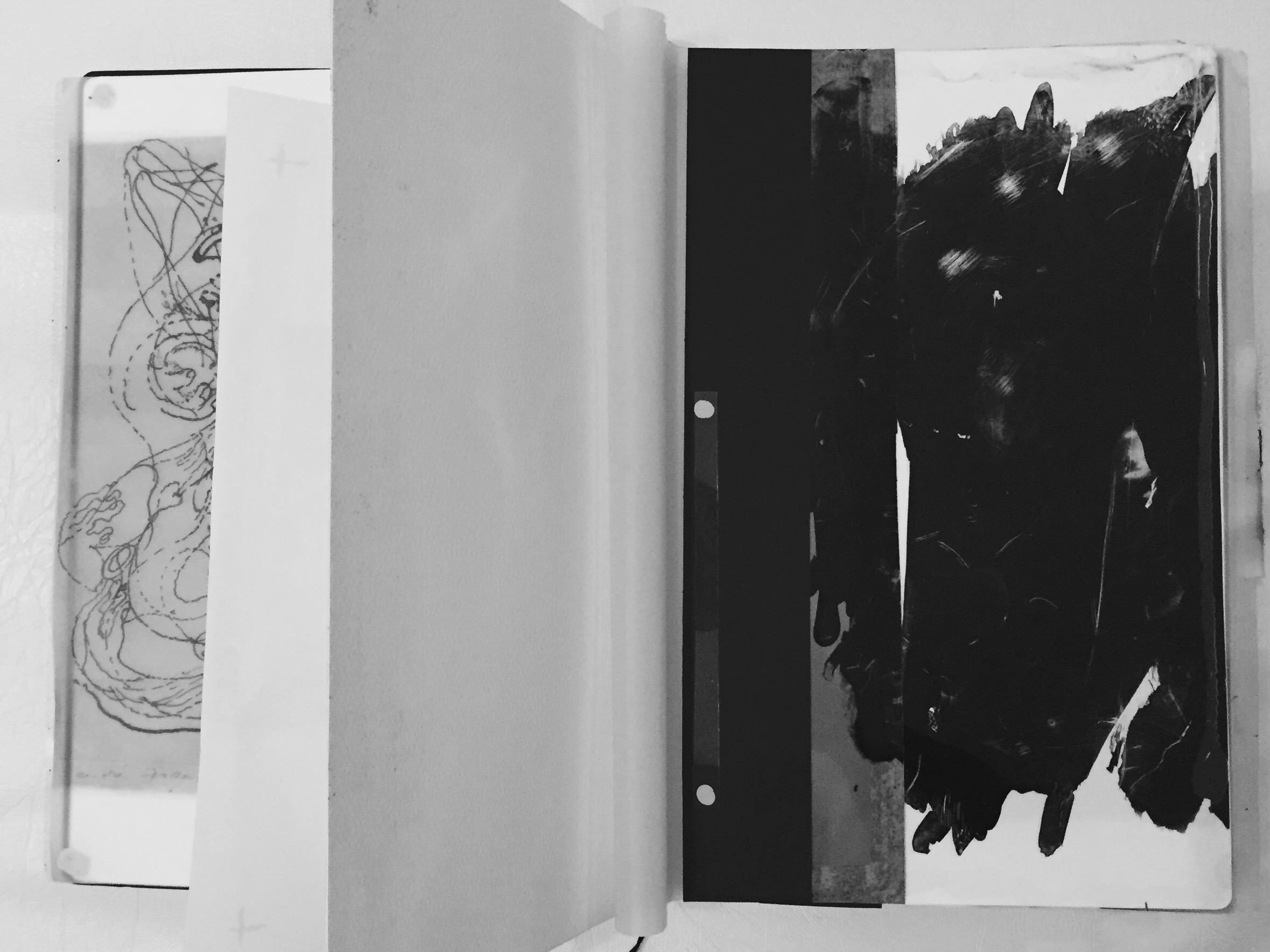
Journal Exploration and development for Project 1 by Pang Xin
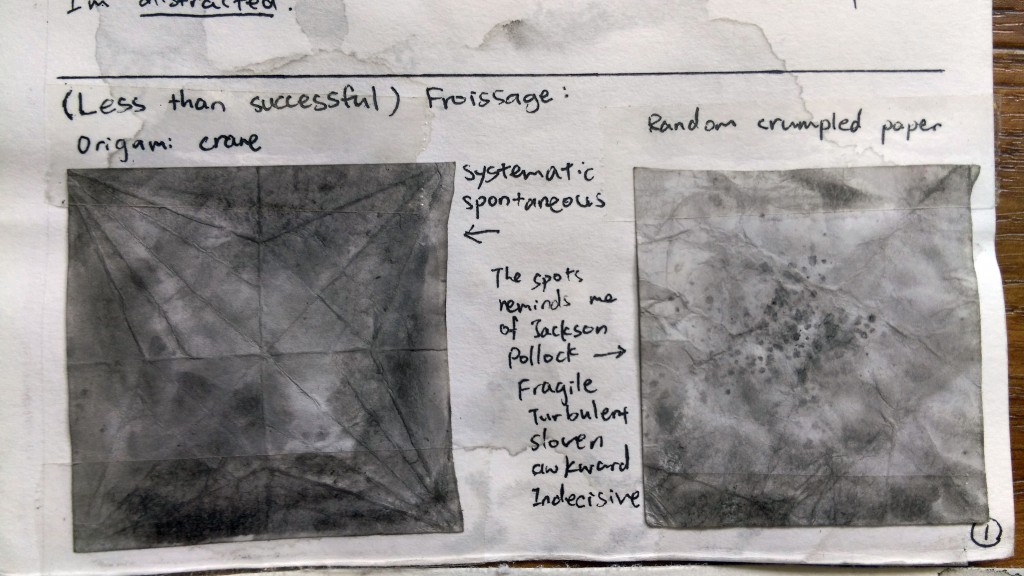

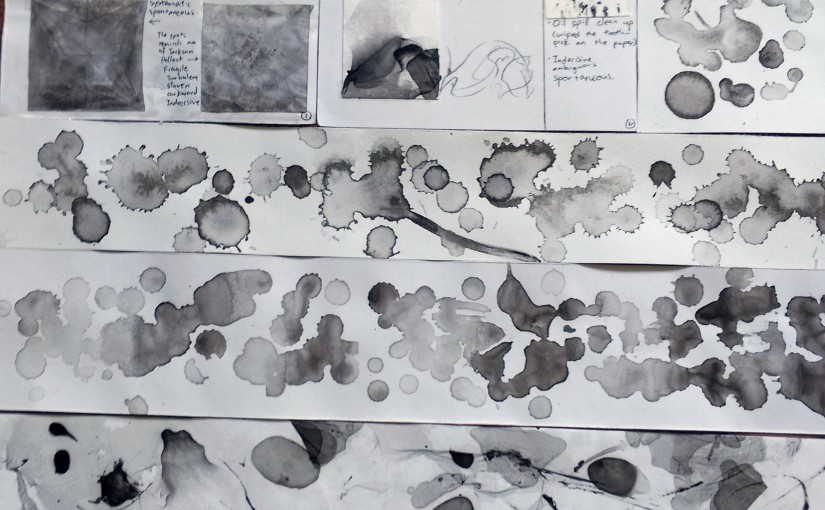
Explore Techniques and Start Drawing
Please consider to use the A3 Template to sketch or create your own lines’ templates
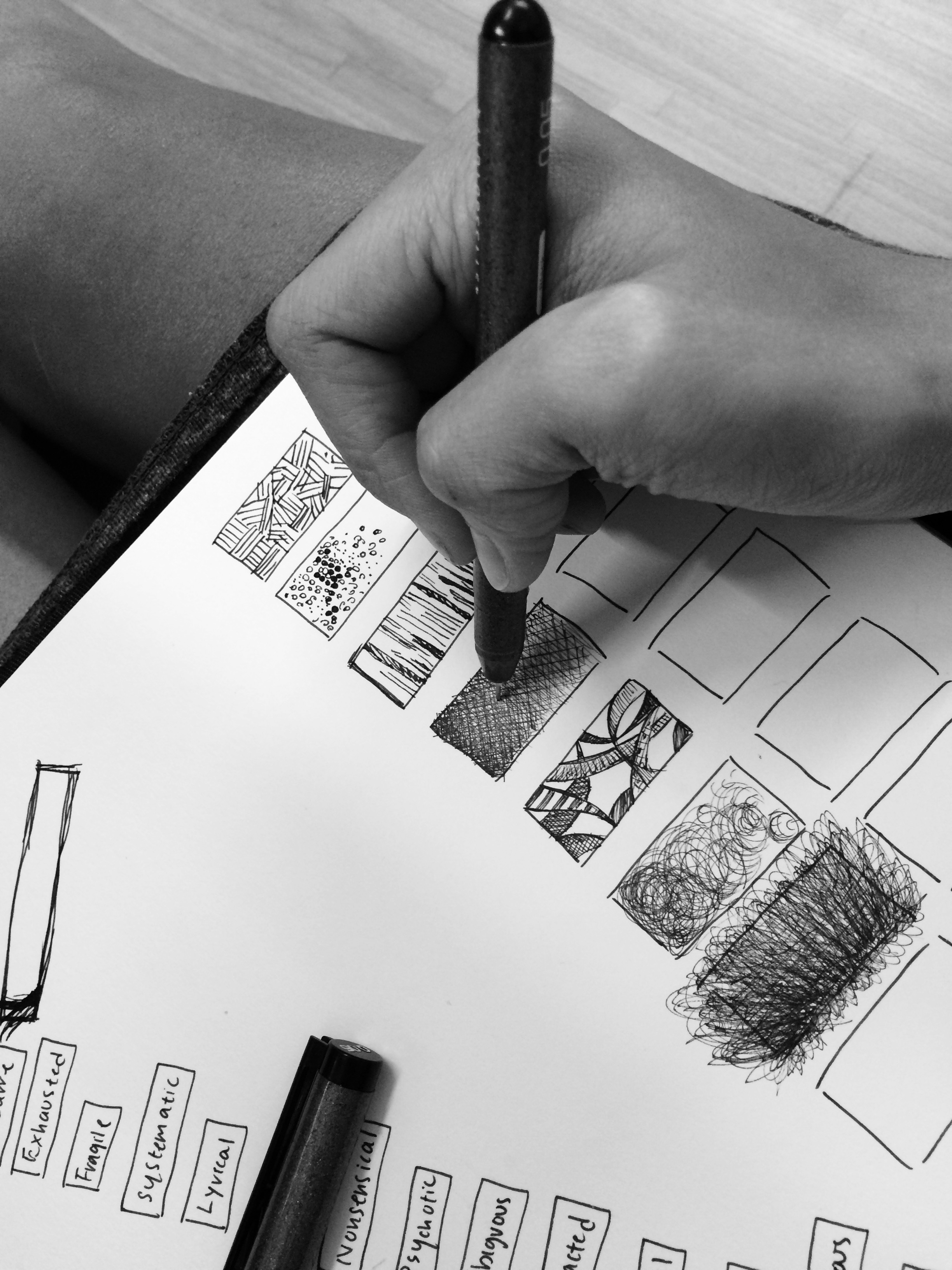

Research on Techniques
Mark Making
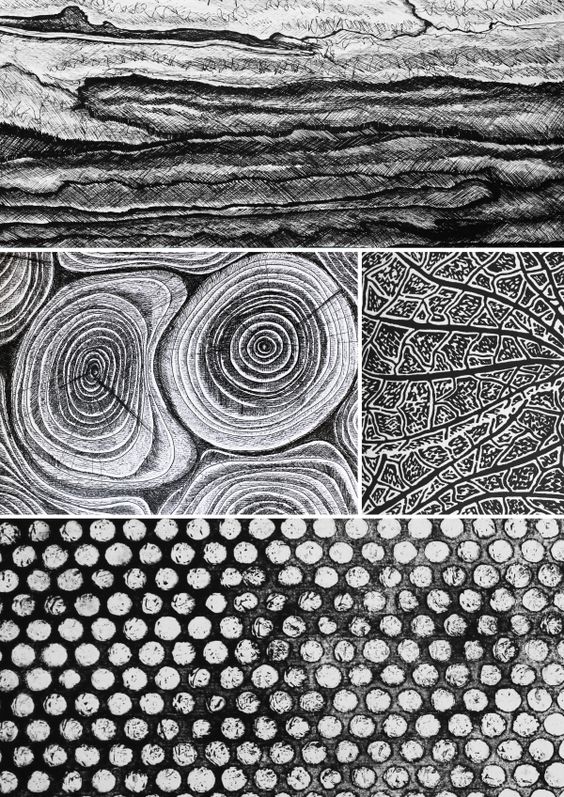
Drawing Expressive Line

Exploring Automatic Techniques
“In psychology, “automatism” refers to involuntary actions and processes not under the control of the conscious mind—for example, dreaming, breathing, or a nervous tic. Automatism plays a role in Surrealists techniques such as spontaneous or automatic writing, painting, and drawing; free association of images and words; and collaborative creation though games like Exquisite Corpse. Surrealists were also deeply interested in interpreting dreams as conduits for unspoken feelings and desires. The works explored here did not begin with preconceived notions of a finished product; rather, they were provoked by dreams, or emerged from subconscious associations between images, text, and their meanings.”
For more please visit Museum of Modern Art: “New York Tapping the Subconscious”
Automatic Drawing
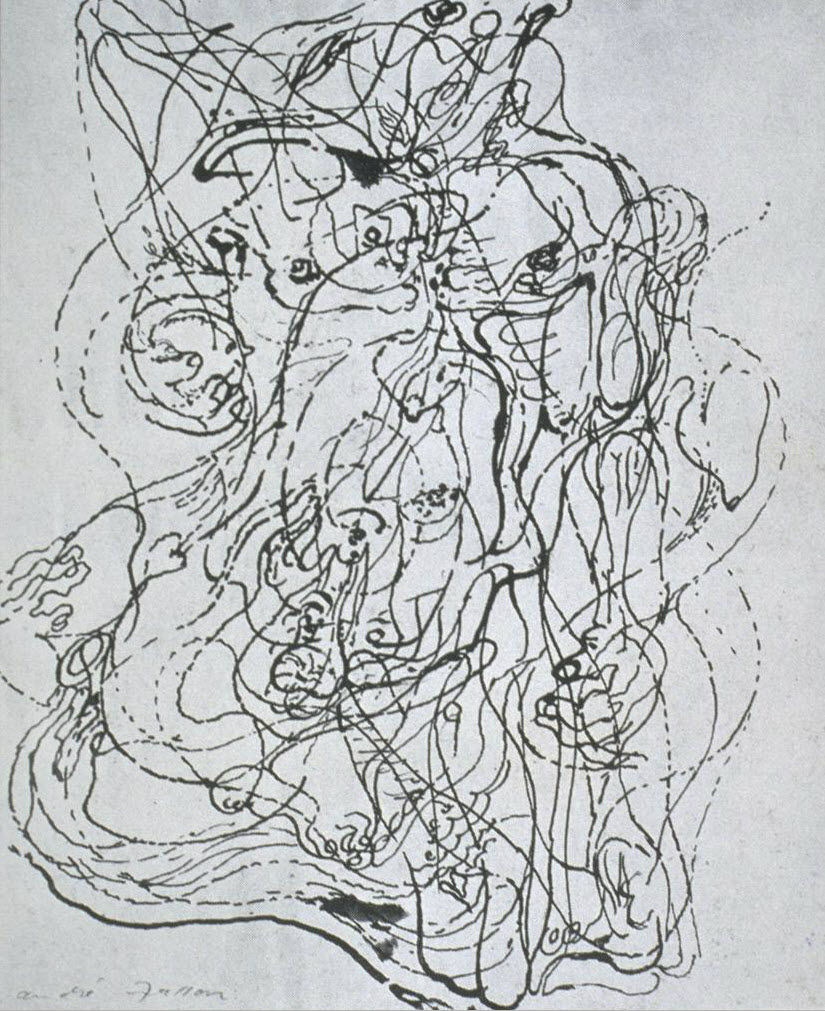
Declacomania Art Technique “Decalcomania is a process of spreding thick paint upon a canvas then—while it is still wet—covering it with further material such as paper or aluminium foil. This covering is then removed (again before the paint dries), and the resultant paint pattern becomes the basis of the finished painting. The technique was much employed by artists such as Max Ernst.” Taken from Surrealist Techniques Wiki. Link to Video

Frottage Art “In frottage artworks the artist takes a pastel or pencil or other drawing tool and makes a rubbing over an uneven surface. The drawing can be left as it is or used as the basis for further refinement.It was developed by Ernst in 1925. Ernst was inspired by an ancient wooden floor where the grain of the planks had been accentuated by many years of scrubbing. The patterns of the graining suggested strange images to him. He captured these by laying sheets of paper on the floor and then rubbing over them with a soft pencil.” For more please see the link
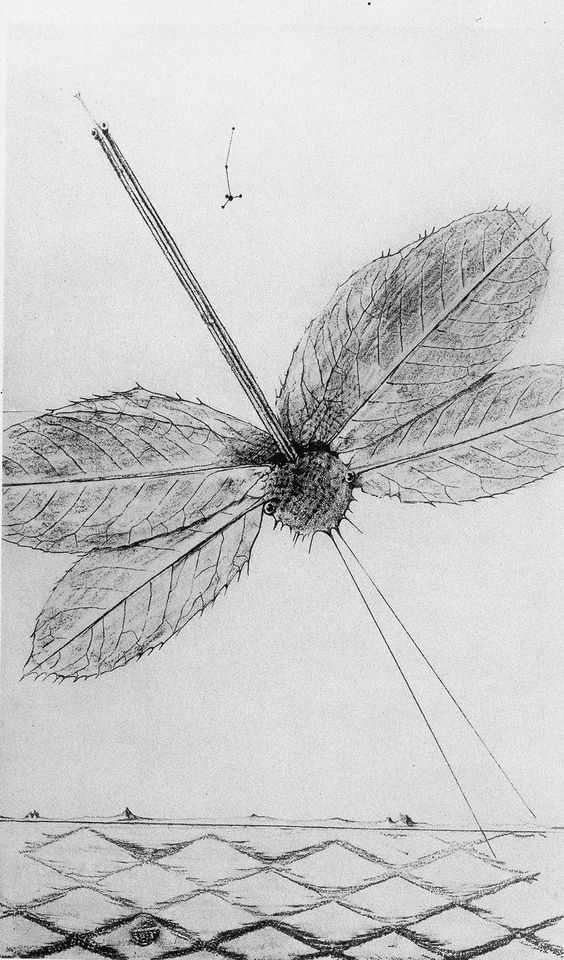
Fumage Art Techniques a surrealist art technique popularized by Wolfgang Paalen in which impressions are made by the smoke of a candle or kerosene lamp on a piece of paper or canvas. Salvador Dalí later utilized the technique in his paintings, calling the technique “sfumato”.
For more please see Pinterest

Research on Artists
Apart from your own drawings and sketching research would encompass looking into many resources and artists. Here are only few names for you to look into Ed Moses Drawings from 1960 and 70ties, Sol LeWitt “Scribbles”, gunpowder drawings by Cai Guo-Qiang, Sol Lewitt, Hilma af Klint, Emma Kunz, Agnes Martin, Andy Warhol’s Shadows, Oxidations, and Rorschach, Julie Mehretu, Cy Twombly, Franz Kline, Yves Klein, Mark Bradford etc.
Cai Guo-Qiang is a Chinese artist who currently lives and works in New York City.
While living in Japan from 1986 to 1995, Cai Guo-Qiang began exploring the properties of gunpowder in his drawings. Cai’s use of gunpowder has become central to his practice, leading to his experimentation with explosives and the development of his signature ignition events. Drawn to the medium for its myriad of associations, his gunpowder work, in addition to his repertoire of large-scale installations and social projects, draws upon Eastern philosophy, Maoist sentiment, and contemporary social issues.”
For more and in addition see the link to artist’s web
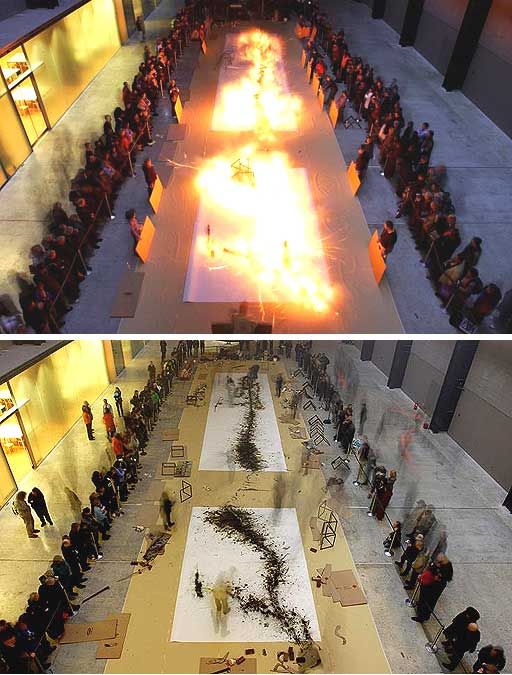
Sol LeWitt “Solomon “Sol” LeWitt was an American artist linked to various movements, including Conceptual art and Minimalism. LeWitt’s art is not about the singular hand of the artist; it is the ideas behind the works that surpass each work itself..”
For more on Sol LeWitt: A Wall Drawing Retrospective
Scribbles by Sol Le Witt
Emma Kunz…Over the last years the interest in esoteric art has increased greatly. Yet relatively few are still familiar with the Swiss artist Emma Kunz. She herself thought that her drawings belonged to the future. If we are to believe Kunz, the time is now ripe to discover her art…..Please See More
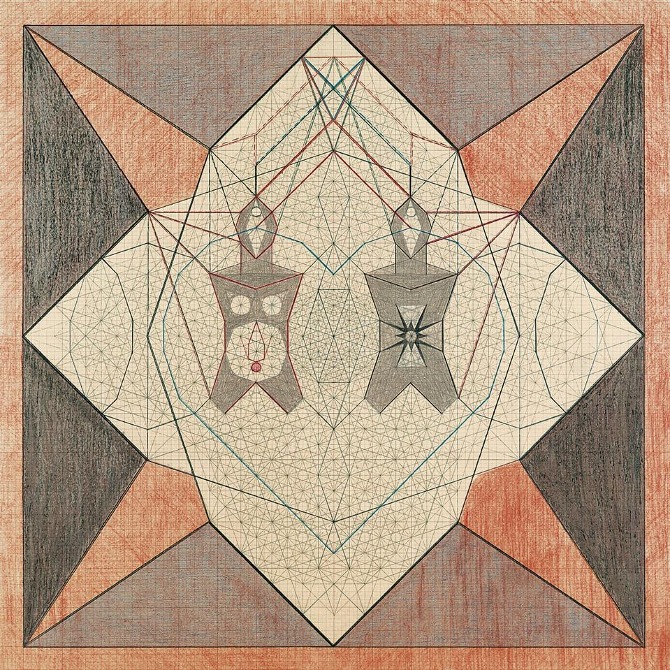
Agnes Martin “My paintings have neither object nor space nor line nor anything – no forms. They are light, lightness, about merging, about formlessness, breaking down form. You wouldn’t think of form by the ocean. You can go in if you don’t encounter anything. A world without objects, without interruption, making a work without interruption or obstacle. It is to accept the necessity of the simple direct going into a field of vision as you would cross an empty beach to look at the ocean.”
For more please see Agnes Martin – Beauty is the Mystery of Life
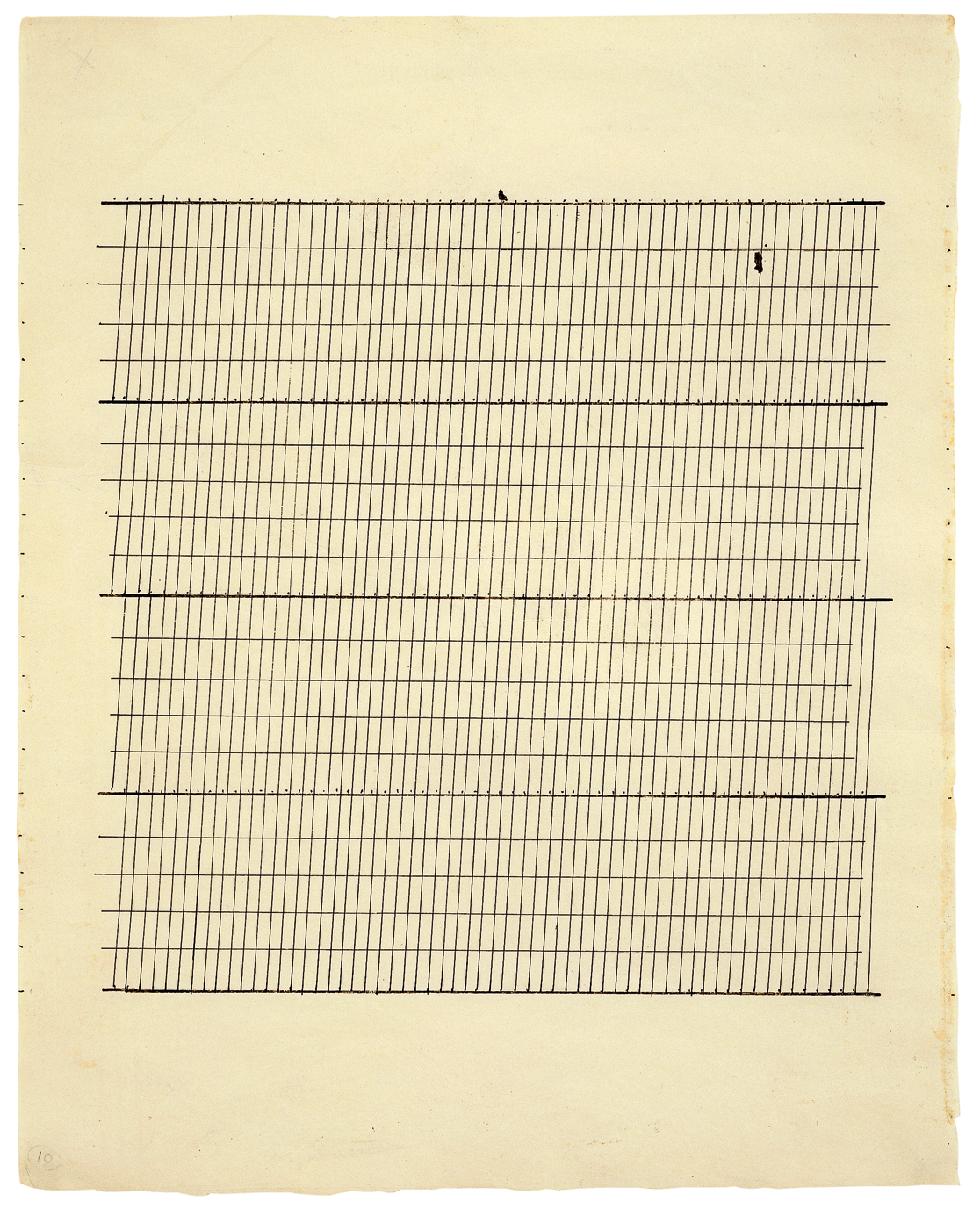
© 2012 Estate of Agnes Martin / Artists Rights Society (ARS), New York Link to Resource: Notations: Contemporary Drawing …..For more please see Pinterest
Andy Warhol’s Rorschach “This painting belongs to a series modeled on the famous “inkblot” test invented by the Swiss psychiatrist Hermann Rorschach. Whereas the actual test provides ten standardized blots for a patient to decipher, Warhol invented his own, achieved by painting one side of a canvas and then folding it vertically to imprint the other half. Ironically, Warhol originally misinterpreted the clinical process, believing that patients created the inkblots and doctors interpreted them: “I thought that when you went to places like hospitals, they tell you to draw and make the Rorschach Tests. I wish I’d known there was a set.” Because of this misunderstanding, Warhol’s Rorschach series is one of the few in which the artist does not rely on preexisting images.”
For more please see MOMA

© 2010 The Andy Warhol Foundation for the Visual Arts/Artists Rights Society (ARS), New York. For more please see Pinterest
Andy Warhol’s Oxidations “In December 1977 Warhol began the Oxidations, iridescent canvases made up of coppery yellows, oranges and greens. Surprisingly, the only paint used by the artist in this very “painterly” work was the metallic copper background. Warhol invited friends and acquaintances to urinate onto a canvas covered in metallic paint in order to cause oxidation. The uric acid reacted with the copper in the paint, removing components of the pure metal to form mineral salts. Some colors developed immediately while others like blue and green formed later on top of the red or brown copper oxides. Warhol and his collaborators experimented with both pattern and coloration by using a variety of metallic background paints and by varying the maker’s fluid and food intake. Critics have made numerous comparisons between the Oxidation series and Jackson Pollack’s famous drip paintings from the 1940s and early 1950s.” Read more at warhol.org:

Acrylic and urine in linen, 48 x 49 in. (121.9 x 124.5 cm)
Image courtesy of: © 2010 The Andy Warhol Foundation for the Visual Arts Artists Rights Society (ARS), New York. For more please see on Pinterest
Andy Warhol’s Shadows ” the chronicler of an era, was known for admitting his “fondness for dull things,” which by the early 1960s corresponded to his use of photographic reproductions of found imagery culled from newspapers, magazines, and image archives. In 1978, at age 50, Warhol embarked upon the production of a monumental body of work titled Shadows with the assistance of his entourage at the Factory. These 102 silk-screened canvas panels formalized earlier explorations with abstraction. To locate the radical implications of Warhol’s Shadows, one must begin with the work’s form: this series was conceived as one painting in multiple parts, the final number of canvases determined by the dimensions of an exhibition space. In the first exhibition, 83 canvases were installed edge to edge, a foot from the floor, in the order that Warhol’s assistants hung them”.
For more please visit The Museum of Contemporary Art MOCA

Ed Mosses
Ed Moses has been a significant figure in contemporary art in Los Angeles since his first solo exhibition at Ferus Gallery in 1958. Since the very beginning, drawing has been central to Moses’s practice. From his large, all-over graphite drawings of roses from the 1960s to his signature diagonal grids of the 1970s and beyond, Moses’s work has always been grounded in graphic experimentation.
For more please see Ed Moses: Drawings from the 1960s and 70s
“Viewed from afar, this screen, made up of four painted wood panels framed with silver borders, appears to feature a large, gray graphic with floral white cutouts. Upon closer inspection, however, the large, dark mass that fills up most of this screen are made up of thousands of vertical, dark etches that mindfully elude the floral elements dotting the canvas. “The graphite pieces were about carrying out a psychological exercise. I had a vision that if you put enough silver in a mold, it fills up its density and it will set up its own kind of visual drama or power. Power is what I was looking for,” says the artist, Ed Moses, of his strategy in creating such works.”
For more please see From the Collection: Rose Screen by Ed Moses
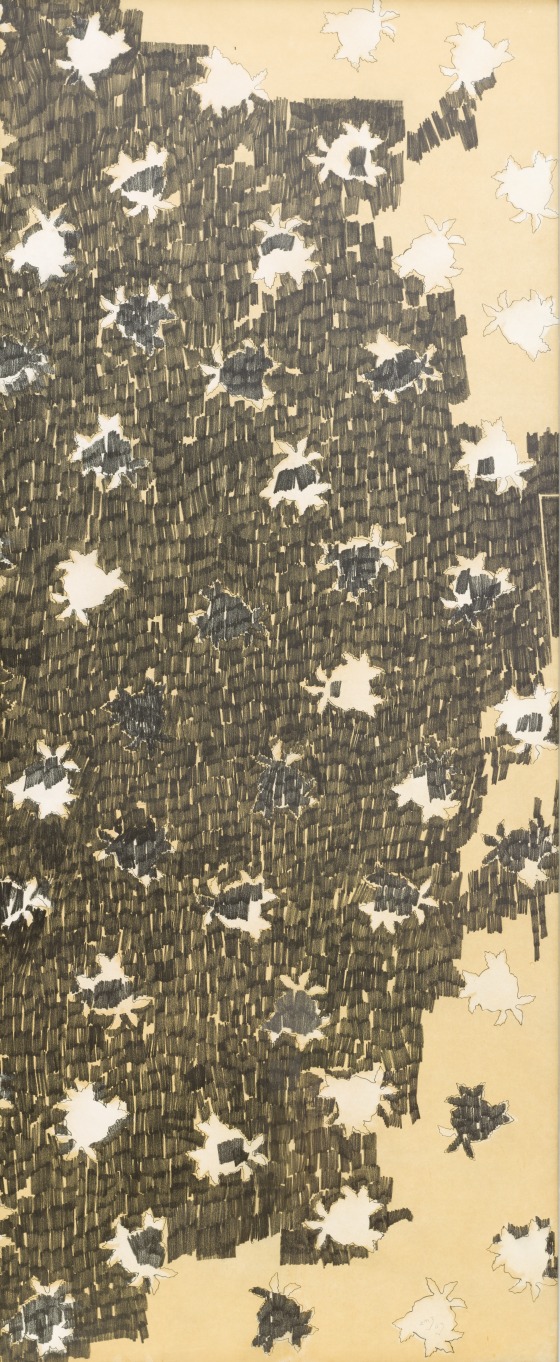
Homework due Week 2
Due Monday 15th of August
-
Please Sign up for one of Presentation Topics on Google Doc. Each presentation is going to be done by two or three students- please discuss among yourself which ones you want to do:)
-
For Project 1: Research on techniques (Automatic drawing, Declacomania, Frottage Art, Fumage..etc) and artists from Week 1 presentation on OSS class site. Or you can use any desired reference from Pinterest, online resources and or library art books on expressive line making
-
Choose one or few artists and try to emulate their style for your lines. Sketch or Document the process (photo or bring actual sketches in your Visual Journal; your visual journal can be drawing pad or loose sheet of paper)
-
Create your own mark making drawing tool (s). Please reference Mark making drawing tools resources from Pinterest.(Suggested search under experimental, line, making). Try it out- it might fall apart!
-
Bring threads and scraps soft textures for monoprint
-
Feel free to email me if any questions
Examples of home-made mark making tools
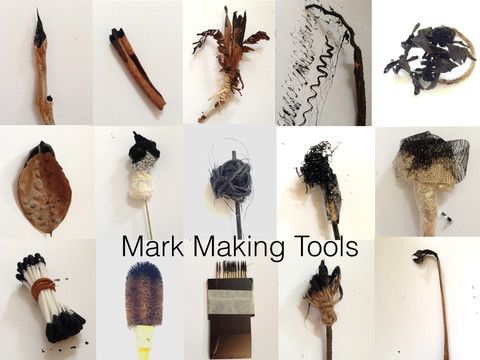
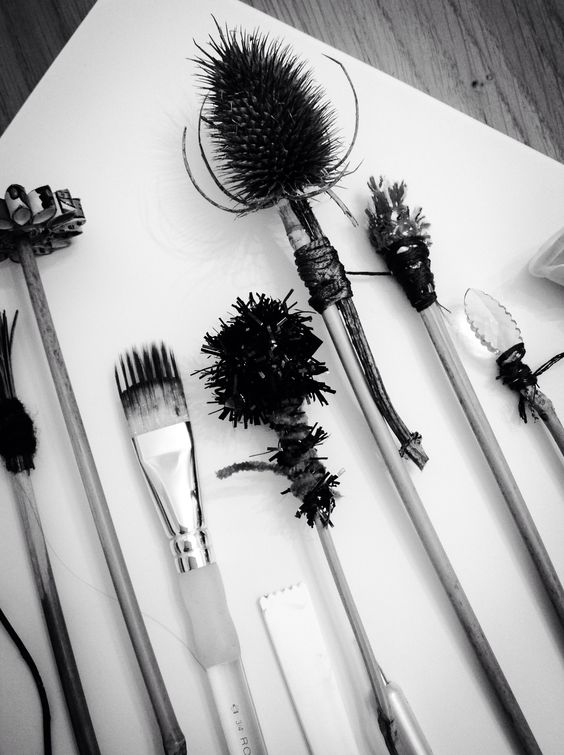
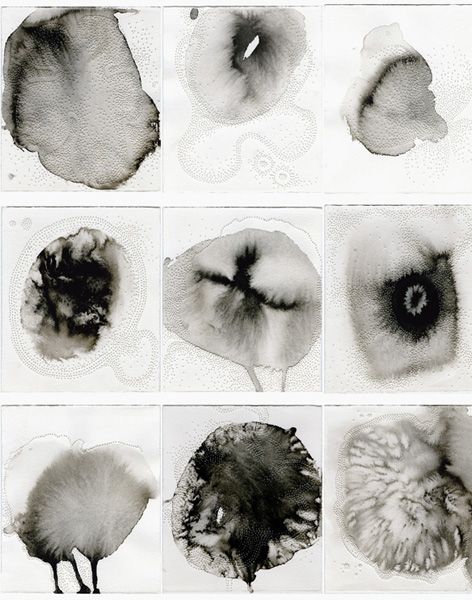
Research on Artists
This is example from last years’s student’s work:
https://oss.adm.ntu.edu.sg/ummi0001/category/2015-dn1002-g6/lines/lines-artist-research/